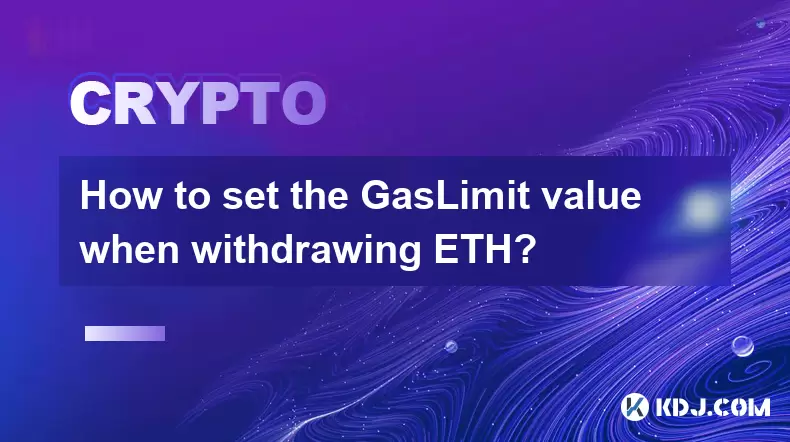-
 Bitcoin
Bitcoin $118000
-2.69% -
 Ethereum
Ethereum $4617
-0.94% -
 XRP
XRP $3.100
-4.95% -
 Tether USDt
Tether USDt $1.000
0.02% -
 BNB
BNB $847.9
0.68% -
 Solana
Solana $195.4
-1.22% -
 USDC
USDC $0.9997
-0.01% -
 TRON
TRON $0.3628
1.01% -
 Dogecoin
Dogecoin $0.2261
-6.42% -
 Cardano
Cardano $0.9229
5.88% -
 Chainlink
Chainlink $22.81
-2.94% -
 Hyperliquid
Hyperliquid $44.85
-1.20% -
 Sui
Sui $3.822
-3.14% -
 Stellar
Stellar $0.4239
-5.48% -
 Bitcoin Cash
Bitcoin Cash $591.3
-4.70% -
 Ethena USDe
Ethena USDe $1.001
-0.02% -
 Hedera
Hedera $0.2523
-3.94% -
 Avalanche
Avalanche $23.94
-4.27% -
 Litecoin
Litecoin $122.9
-5.68% -
 Toncoin
Toncoin $3.421
-1.11% -
 UNUS SED LEO
UNUS SED LEO $9.264
0.24% -
 Shiba Inu
Shiba Inu $0.00001303
-5.26% -
 Uniswap
Uniswap $11.01
-7.86% -
 Polkadot
Polkadot $4.038
-4.21% -
 OKB
OKB $99.10
5.46% -
 Dai
Dai $0.9998
0.00% -
 Bitget Token
Bitget Token $4.600
-2.32% -
 Cronos
Cronos $0.1534
-7.90% -
 Ethena
Ethena $0.7414
-4.15% -
 Aave
Aave $315.3
-2.45%
How to set the GasLimit value when withdrawing ETH?
When withdrawing ETH, set the GasLimit correctly to ensure efficient and cost-effective transactions; a standard transfer typically needs a GasLimit of 21,000.
May 14, 2025 at 07:07 pm

When withdrawing Ethereum (ETH), setting the correct GasLimit value is crucial to ensure that your transaction is processed efficiently and cost-effectively. The GasLimit is the maximum amount of gas you are willing to use for a transaction, and it directly impacts the transaction's speed and cost. In this article, we will explore the steps and considerations for setting the GasLimit value when withdrawing ETH.
Understanding Gas and GasLimit in Ethereum
Gas is a unit of measurement for the computational effort required to execute operations on the Ethereum network. Each operation, such as transferring ETH or executing a smart contract, consumes a certain amount of gas. The GasLimit is the maximum amount of gas you are willing to spend on a transaction. If the transaction requires more gas than the specified GasLimit, it will fail and you will lose the gas already spent.
When withdrawing ETH, setting an appropriate GasLimit is essential to ensure that your transaction is processed without issues. If the GasLimit is too low, the transaction may fail, and if it is too high, you may end up paying more than necessary.
Factors to Consider When Setting the GasLimit
Several factors should be considered when setting the GasLimit for withdrawing ETH:
- Transaction Complexity: Simple transactions, such as transferring ETH from one address to another, typically require less gas than more complex operations involving smart contracts.
- Network Congestion: During periods of high network activity, the GasLimit may need to be adjusted to ensure that your transaction is processed in a timely manner.
- Gas Price: The Gas Price is the amount of ETH you are willing to pay per unit of gas. A higher Gas Price can result in faster transaction processing but will increase the overall cost.
How to Set the GasLimit for Withdrawing ETH
Setting the GasLimit for withdrawing ETH can be done through various Ethereum wallets and platforms. Here is a step-by-step guide on how to set the GasLimit using a popular wallet like MetaMask:
- Open MetaMask: Launch the MetaMask browser extension or mobile app.
- Select the Account: Choose the account from which you want to withdraw ETH.
- Initiate the Withdrawal: Click on "Send" and enter the recipient's address and the amount of ETH you want to send.
- Adjust the Gas Settings: Click on "Edit" next to the gas fee estimate. Here, you can manually set the GasLimit and Gas Price.
- Set the GasLimit: Enter the desired GasLimit value. For a standard ETH transfer, a GasLimit of 21,000 is typically sufficient. However, you may need to adjust this based on the factors mentioned earlier.
- Confirm the Transaction: Review the transaction details and click "Confirm" to proceed with the withdrawal.
Recommended GasLimit Values for Different Scenarios
The appropriate GasLimit value can vary depending on the specific scenario. Here are some recommended GasLimit values for common Ethereum transactions:
- Standard ETH Transfer: A GasLimit of 21,000 is generally sufficient for transferring ETH from one address to another.
- ERC-20 Token Transfer: For transferring ERC-20 tokens, a GasLimit of around 50,000 to 100,000 is often recommended, depending on the token's smart contract complexity.
- Interacting with Smart Contracts: When interacting with smart contracts, the GasLimit can vary widely. It is advisable to check the specific requirements of the smart contract you are interacting with.
Monitoring and Adjusting the GasLimit
After setting the GasLimit, it is important to monitor the transaction's status and be prepared to adjust the GasLimit if necessary. Here are some tips for monitoring and adjusting the GasLimit:
- Check Transaction Status: Use a blockchain explorer like Etherscan to monitor the status of your transaction. If the transaction is stuck due to a low GasLimit, you may need to increase it.
- Adjust GasLimit: If your transaction fails due to an insufficient GasLimit, you can resubmit the transaction with a higher GasLimit. Be cautious not to set the GasLimit too high, as this can increase the transaction cost unnecessarily.
- Use Gas Estimators: Many wallets and platforms offer gas estimators that can help you set an appropriate GasLimit based on current network conditions.
Common Mistakes to Avoid When Setting the GasLimit
Setting the GasLimit incorrectly can lead to transaction failures or unnecessary costs. Here are some common mistakes to avoid:
- Setting the GasLimit Too Low: If the GasLimit is too low, the transaction may fail, and you will lose the gas already spent.
- Setting the GasLimit Too High: While setting a high GasLimit can ensure that the transaction is processed, it can also result in higher costs than necessary.
- Ignoring Network Conditions: Failing to consider current network congestion can lead to setting an inappropriate GasLimit, causing delays or failures.
Frequently Asked Questions
Q: Can I change the GasLimit after submitting a transaction?
A: No, once a transaction is submitted to the Ethereum network, the GasLimit cannot be changed. If the transaction fails due to an insufficient GasLimit, you will need to resubmit the transaction with a higher GasLimit.
Q: How does the GasLimit affect the transaction speed?
A: The GasLimit itself does not directly affect the transaction speed. However, setting a higher GasLimit can allow for a higher Gas Price, which can result in faster transaction processing during periods of network congestion.
Q: What happens if I set the GasLimit too high?
A: If you set the GasLimit too high, you will only be charged for the gas actually used by the transaction. However, setting the GasLimit unnecessarily high can lead to higher transaction costs if the network conditions change and the Gas Price increases.
Q: Is there a maximum GasLimit I can set for a transaction?
A: Yes, the Ethereum network has a block gas limit, which is the maximum amount of gas that can be used by all transactions in a block. The block gas limit can vary, but it is typically around 30 million gas. Your transaction's GasLimit cannot exceed this block gas limit.
Disclaimer:info@kdj.com
The information provided is not trading advice. kdj.com does not assume any responsibility for any investments made based on the information provided in this article. Cryptocurrencies are highly volatile and it is highly recommended that you invest with caution after thorough research!
If you believe that the content used on this website infringes your copyright, please contact us immediately (info@kdj.com) and we will delete it promptly.
- Kazakhstan's Crypto Leap: Bitcoin ETF and Central Asia's Digital Finance Future
- 2025-08-13 12:45:19
- BlockDAG Presale Blazes Past $371M: Fundraising Frenzy Fuels Crypto Sensation
- 2025-08-13 13:05:21
- Meme Coins: Chasing the 2025 Surge – Which Will Moonshot?
- 2025-08-13 10:25:23
- Bitcoin's Wild Ride: Rally, Pullback, and What's Next
- 2025-08-13 10:25:23
- Bitcoin, Bitmax, and Institutional Demand: A New Era of Crypto Investment
- 2025-08-13 10:45:12
- Solana, ROAM, and Airdrops: What's the Buzz in 2025?
- 2025-08-13 11:35:13
Related knowledge

How to purchase Aragon (ANT)?
Aug 09,2025 at 11:56pm
Understanding Aragon (ANT) and Its PurposeAragon (ANT) is a decentralized governance token that powers the Aragon Network, a platform built on the Eth...

Where to trade Band Protocol (BAND)?
Aug 10,2025 at 11:36pm
Understanding the Role of Private Keys in Cryptocurrency WalletsIn the world of cryptocurrency, a private key is one of the most critical components o...

What is the most secure way to buy Ocean Protocol (OCEAN)?
Aug 10,2025 at 01:01pm
Understanding Ocean Protocol (OCEAN) and Its EcosystemOcean Protocol (OCEAN) is a decentralized data exchange platform built on blockchain technology,...

How to invest in Kyber Network Crystal v2 (KNC)?
Aug 12,2025 at 05:21pm
Understanding Kyber Network Crystal v2 (KNC)Kyber Network is a decentralized liquidity hub built on the Ethereum blockchain that enables instant token...

Where can I buy UMA (UMA)?
Aug 07,2025 at 06:42pm
Understanding UMA and Its Role in Decentralized FinanceUMA (Universal Market Access) is an Ethereum-based decentralized finance (DeFi) protocol design...

How to sell my Ren (REN) tokens?
Aug 13,2025 at 11:35am
Understanding REN Tokens and Their Role in Decentralized FinanceREN is an ERC-20 token that powers the Ren protocol, a decentralized interoperability ...

How to purchase Aragon (ANT)?
Aug 09,2025 at 11:56pm
Understanding Aragon (ANT) and Its PurposeAragon (ANT) is a decentralized governance token that powers the Aragon Network, a platform built on the Eth...

Where to trade Band Protocol (BAND)?
Aug 10,2025 at 11:36pm
Understanding the Role of Private Keys in Cryptocurrency WalletsIn the world of cryptocurrency, a private key is one of the most critical components o...

What is the most secure way to buy Ocean Protocol (OCEAN)?
Aug 10,2025 at 01:01pm
Understanding Ocean Protocol (OCEAN) and Its EcosystemOcean Protocol (OCEAN) is a decentralized data exchange platform built on blockchain technology,...

How to invest in Kyber Network Crystal v2 (KNC)?
Aug 12,2025 at 05:21pm
Understanding Kyber Network Crystal v2 (KNC)Kyber Network is a decentralized liquidity hub built on the Ethereum blockchain that enables instant token...

Where can I buy UMA (UMA)?
Aug 07,2025 at 06:42pm
Understanding UMA and Its Role in Decentralized FinanceUMA (Universal Market Access) is an Ethereum-based decentralized finance (DeFi) protocol design...

How to sell my Ren (REN) tokens?
Aug 13,2025 at 11:35am
Understanding REN Tokens and Their Role in Decentralized FinanceREN is an ERC-20 token that powers the Ren protocol, a decentralized interoperability ...
See all articles

























































































